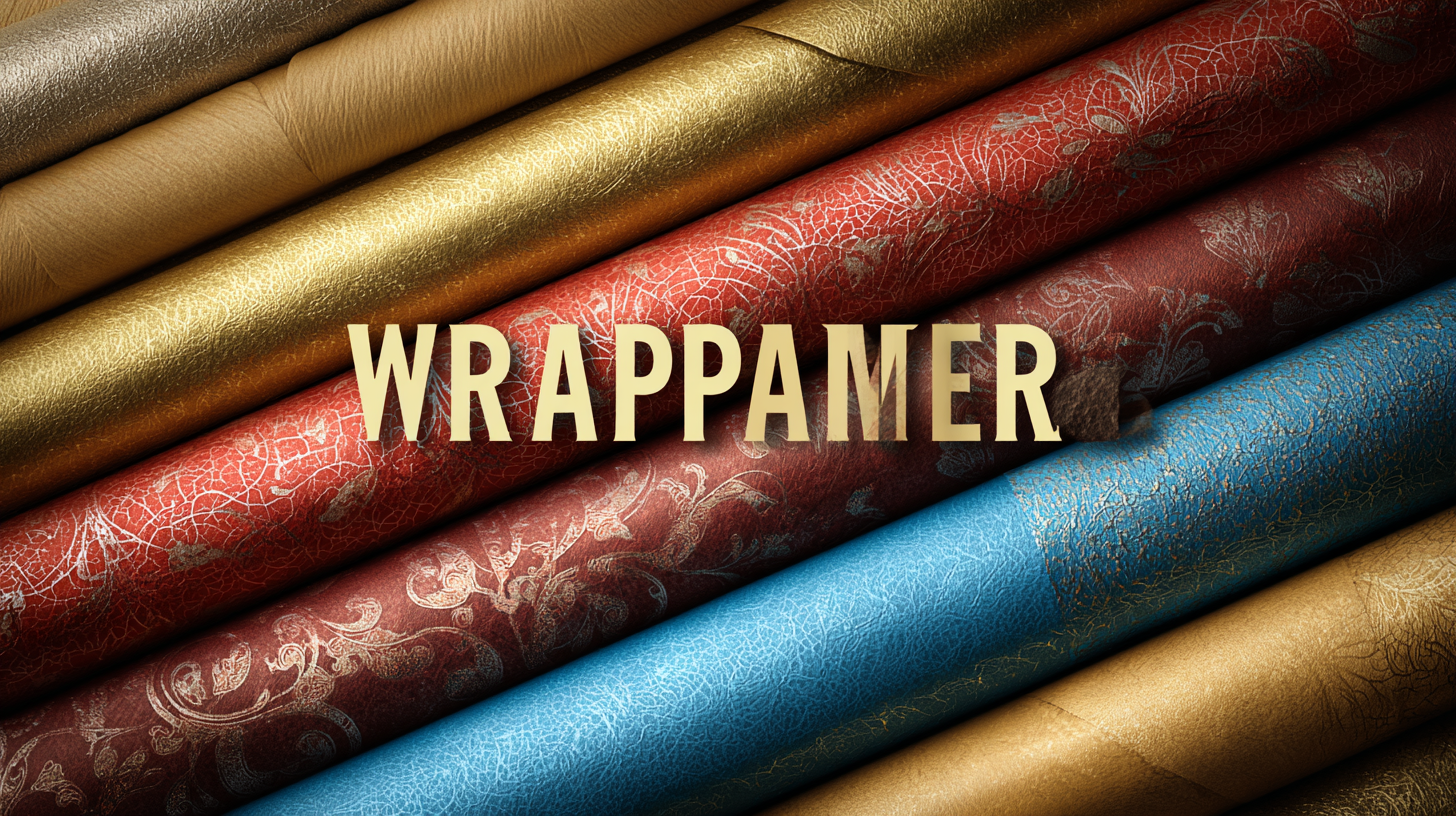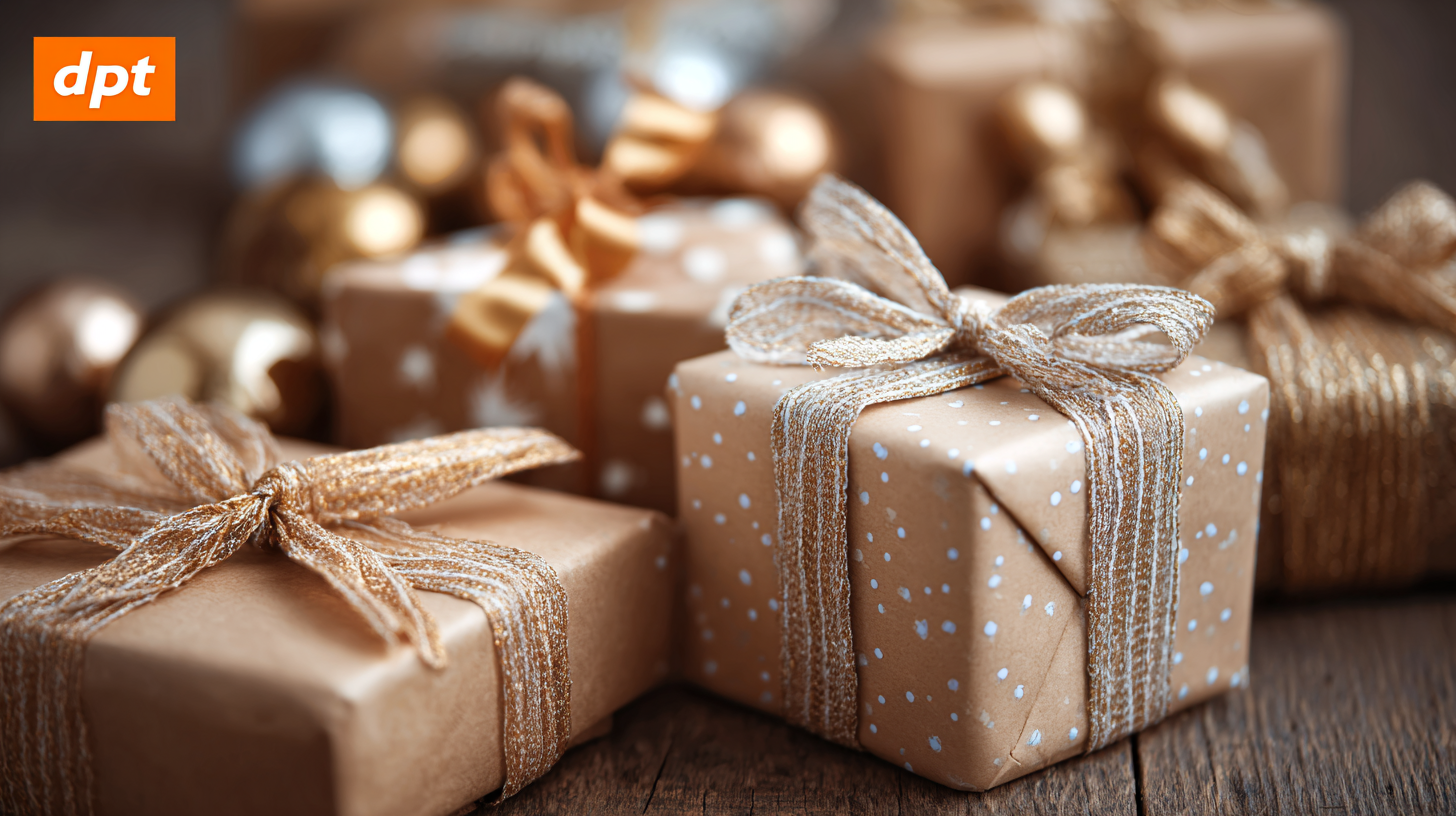
In the evolving landscape of gift-giving, the significance of wrapping paper has gained unprecedented attention, both for its aesthetic appeal and its environmental impact. According to a recent industry report by Smithers Pira, the global market for wrapping paper is projected to reach $20 billion by 2025, driven by shifting consumer preferences and innovative alternatives to traditional materials.

As more people become aware of the ecological concerns associated with conventional wrapping options, there is a growing demand for sustainable alternatives that do not compromise on style. This blog will explore the latest trends in wrapping paper, shedding light on eco-friendly materials, creative techniques, and unique presentations that can transform how we celebrate special occasions.
By embracing these insights, consumers can enhance their gift-giving experience while supporting a greener future.
The landscape of gift wrapping is undergoing a significant transformation as we approach 2025. According to a recent report by the Paper and Packaging Board, 65% of consumers consider the presentation of a gift as important as the gift itself. This trend has sparked a surge in demand for unique and sustainable wrapping solutions. Biodegradable wrapping papers, reusable fabric wraps, and craft paper are leading the charge, with a 40% increase in popularity compared to traditional plastic wraps over the past two years.
In addition, the rising awareness of environmental issues is shifting consumer preferences toward eco-friendly options. A survey by the National Retail Federation revealed that 57% of shoppers are willing to pay more for sustainable wrapping materials. This growing inclination towards eco-consciousness is not only shaping the choices consumers make but is also influencing retailers’ strategies. Industry leaders are actively adapting their product lines to align with these trends, highlighting the importance of wrapping paper as an integral part of the gifting experience in 2025. As we look ahead, it’s clear that gift wrapping will continue to evolve, reflecting both innovation and a commitment to sustainability.

As the demand for eco-friendly options continues to rise, many consumers are actively seeking sustainable wrapping paper solutions. This trend not only reflects a growing awareness of environmental issues but also showcases creativity in gift presentation. Brands are now offering wrapping paper made from recycled materials, plant-based inks, and other biodegradable substances that minimize environmental impact while enhancing the beauty of gifts.
To make the most of sustainable wrapping paper, consider these tips. First, personalize your gift wrap by using fabric remnants or old maps, which not only reduce waste but also add a unique touch to your presents. Second, use minimalistic designs, which often require less ink production and contribute to a lower carbon footprint. Finally, always encourage your recipients to recycle or repurpose the wrapping paper, fostering a culture of sustainability in gift-giving practices.
As eco-conscious consumers, we have the power to influence the industry by choosing sustainable packaging solutions. Embracing trends in eco-friendly wrapping paper can transform not only the way we gift but also lead to a significant reduction in waste, paving the way for a more sustainable future.
In today’s consumer landscape, personalization plays a pivotal role in gift-wrapping choices. Data-driven insights reveal that personalized wrapping paper significantly enhances the overall gifting experience. The unique touch not only makes the receiver feel special but also fosters a stronger emotional connection between the giver and receiver. By using designs that resonate with the recipient’s interests or milestones, you can create a memorable experience that goes beyond the gift itself.
When selecting wrapping paper, consider these tips: First, incorporate elements that reflect the recipient's personality. For instance, if they love nature, opt for wrapping paper adorned with floral or forest designs. Second, don’t shy away from handwritten notes or custom messages – they can elevate the gift-wrapping game and add a heartfelt touch. Lastly, utilize sustainable wrapping options, such as recycled materials or fabric, to appeal to eco-conscious recipients. This not only showcases your thoughtfulness but also aligns with current trends focused on sustainability.

In the fast-evolving world of gift-giving, technological innovations have revolutionized the way we approach gift wrapping. Automation is at the forefront of this transformation, with machines designed to streamline the wrapping process. Retailers are investing in advanced wrapping machines that can measure, cut, and wrap gifts with precision, reducing waste and saving time. This automation not only enhances efficiency but also allows businesses to maintain a high level of consistency, which is particularly important during peak seasons when demand peaks.
Customization trends are equally significant, as consumers seek unique and personalized wrapping options that reflect their individual tastes. Digital printing technology now enables users to incorporate bespoke designs, messages, and images directly onto wrapping paper. This trend has led to the rise of online platforms where customers can create their own wrapping paper tailored specifically for their gifts. Such innovations not only add a personal touch but also elevate the overall gifting experience, turning even simple presents into memorable keepsakes. As we move forward, these advancements in gift wrapping technologies will continue to shape consumer preferences, making gift-giving a more thoughtful and creative process.
The gift-wrapping industry has experienced significant growth, reflecting broader economic trends and consumer behaviors. As the market for non-metal laser engraving machines is predicted to reach approximately $5.76 billion by 2032, industries that align with gifting—such as packaging—are also set to experience expansion. This rise in market size indicates a growing appreciation for personalized gift experiences, which is increasingly facilitated by advanced technologies that enhance the creative process of wrapping gifts.
The increasing demand for innovative and aesthetically pleasing wrapping materials is a pivotal trend in the industry. As consumers become more discerning, they seek options that reflect their personal style and values. This trend has led to a dynamic growth in the gift-wrapping sector, where businesses must adapt to meet the evolving preferences of their clientele. Eco-friendly materials and unique designs are now in high demand, allowing retailers to attract environmentally conscious consumers while distinguishing themselves in a competitive market. The integration of these insights is paramount for businesses aiming to capitalize on the ever-expanding gift-wrapping landscape.
| Category | Market Size (2023) | Growth Rate (2023-2028) | Sustainability Trends | Popular Materials |
|---|---|---|---|---|
| Traditional Paper | $6 billion | 4% | Recyclable options gaining popularity | Recycled paper |
| Gift Bags | $3.5 billion | 5% | Focus on reusable designs | Fabric and paper composites |
| Specialty Wraps | $800 million | 6% | Increased demand for eco-friendly options | Plant-based materials |
| Gift Wrap Accessories | $1.2 billion | 3% | Trends towards biodegradable ribbons | Biodegradable plastic |
| Custom Wrapping Paper | $500 million | 7% | Personalization trends driving eco-friendly choices | Eco-friendly printable materials |